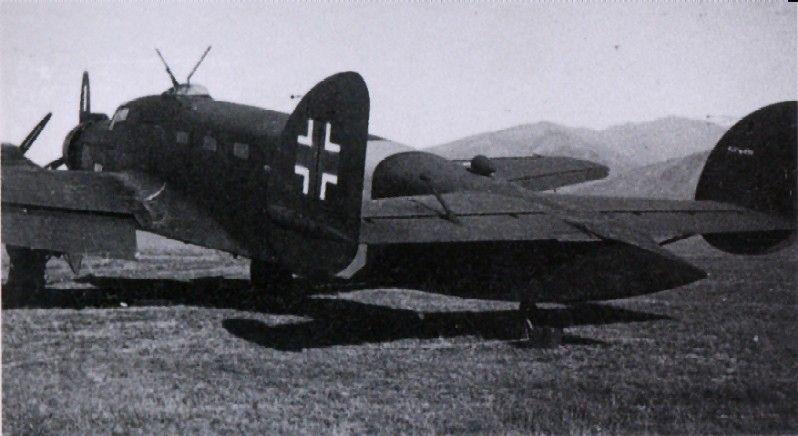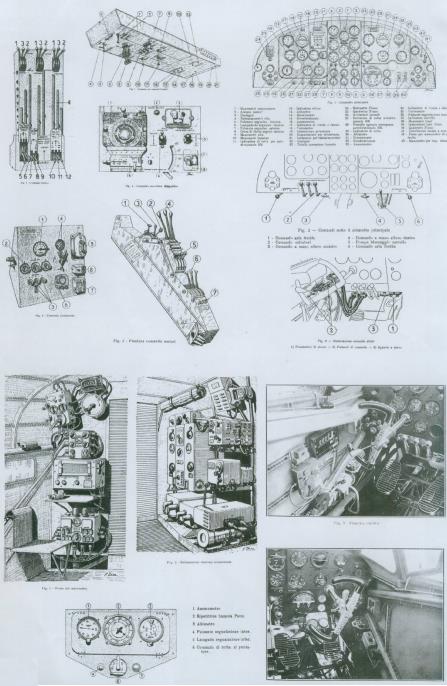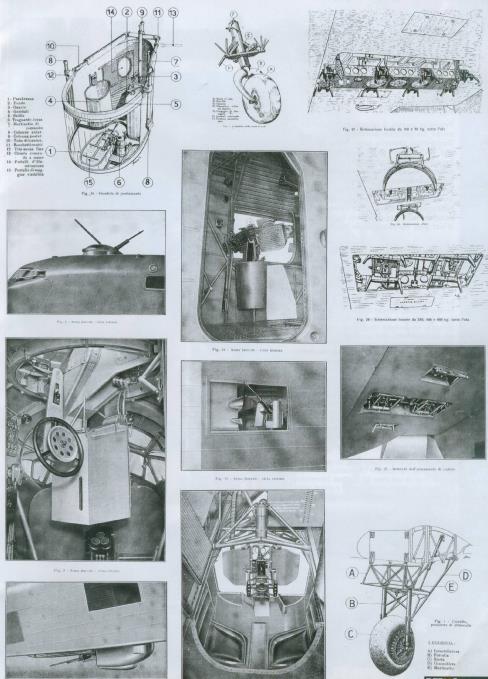Approximately 300 S.M.84s were built, and several attempts were made during production to rectify one of the principal complaints made by its pilots, the inordinately poor visibility from the cockpit over the nose. Some aircraft had the windscreen extended forward but this offered little improvement, and therefore the cockpit glazing was completely redesigned to result in the S.M.84bis. The optically-flat panelled glazed side blisters (which had replaced the elongated "bubble" type blisters of the prototype) gave place to a deeper, less-raked windscreen, and flat side panels. Ten examples of the S.M.84bis were supplied to the Slovakian Air Force in 1942, but these saw only limited service. A few survived the war to serve with the Aeronantica Militare for a brief period before being broken up.




| Type |
5 seat medium bomber and transport |
| Engine |
3 Piaggio P.XI R.C.40 |
| Dimensions |
Length 17,93 m , height 4,59 m , span 21,1 m , wing area 61 m2 , |
| Weights |
Empty 8846 kg, loaded 13228 kg , max. take off weight |
| Performance |
Max.. speed 467 km/h , cruising speed , range 1830 km , endurance , service ceiling 7900 m , climb |
| Armament |
4 x 12.7 mm Scotti machine guns (1 in dorsal turret, 1 in ventral position and 2 in waist positions) 2,000 kg of bombs or 2 torpedoes |
Following the armistice, the Germans incorporated 12 or so SM-84s into the 132nd Transport Group ? and served until the end of the war.
The experience of adapting the SM.79 bomber to a torpedo bomber was very successful, which prompted the Italian Air Force leadership to think about further progress in this direction and gave SIAI a task to develop a specialized aircraft that could soon replace the SM.79 in naval aviation units. The aircraft underwent a new series of improvements, this time quite serious. Retaining its original shape, the prototype of the naval bomber and torpedo bomber SM.84 had a new fuselage design with smooth lines of the upper arch and without the typical SM.79 "hump", where the upper firing point was located. Instead, a Lanciani Delta E turret was installed with a circular field of fire, providing better cover from the upper hemisphere. Instead of a single-fin tail, a two-fin was installed, thus trying to increase the firing area and improve the controllability of the machine, but in fact, a completely opposite effect was obtained. The increased armor of the SM.84 also had a relative usefulness - the additional armor no longer rescued the shells of the 20-mm cannons and cartridges of the 12.7-mm American Browning machine guns, increasing the already increased take-off weight. The biggest problems were caused by the change of the motor installation. Replacing the well-proven Alpha Romeo 126 engines (750 hp)
The first flight of the prototype SM.84 took place on June 5, 1940. During further tests, it turned out that the updated engine setup turned out to be worse than the old one, and the insufficient tail area, combined with a high specific wing load, created a lot of control problems in flight and during takeoff. The shortcomings of the SM.84 were considered common "childhood illnesses" and at the end of 1940 the torpedo bomber was put into mass production. Of the order for 309 serial aircraft, only 246 were manufactured, while not all of them had a chance to take part in hostilities.
The pilots of the naval air groups, who began changing their SM.79 to the SM.84 in February 1941, showed little satisfaction with the new aircraft. Particularly strong criticism was caused by the operation of the engines, due to which half of the flight incidents occurred. Here, one should take into account the fact that the average life expectancy of torpedo pilots was, on average, three sorties, and it was beyond all strength to lose precious aircraft and their crews due to technical shortcomings. Nevertheless, the SM.84 pilots achieved good results at first. On their account on the night of November 14-15, 1941, two transport ships "Empire Defender" and "Empire Pelican" with a total tonnage of more than 10,000 brt were recorded. After that, the hunt for convoys and single transport ships no longer brought positive results. The situation for SM. 84 began to deteriorate rapidly. Thus, on the day the Allies carried out Operation Torch, ten SM.84s and six MC.202 fighters took off from an airfield in Sardinia for a torpedo attack on the port of Beaune. Having got into adverse weather conditions, the crews of the torpedo bombers lost the MC.202 accompanying them and were forced to continue their combat mission without them, as a result of which three aircraft were shot down by British fighters, three were seriously damaged and crashed during landing, and another torpedo bomber landed with killed and wounded pilots on board. While this should not be considered typical in the combat operation of the SM.84, the casualties among aircraft of this type were virtually equal to those among the SM.79. Having received such news, the Italian Air Force began a reverse rearmament process with SM multipurpose bombers. 79 (and from 1943 on SM.79bis). By August 1943, torpedo bombers were in service with only one group - 98 Gr.BT, consisting of 11 SM.84s, and by September 8, Regia Aeronatuca did not have a single torpedo bomber suitable for combat missions.
This is how the combat use of the SM.84 in the Mediterranean ended ingloriously. Several aircraft were still used for some time as military transport vehicles. In mid-1943, a small batch of SM.84s in a transport version was transferred by the Germans to the Slovak Air Force, which felt an acute shortage of any aviation equipment. This is the last mention of the SM.84, which could not even compete with its prototype, the SM.79 bomber.
After the surrender of Italy in the war, it was practically not used, but individual machines served as training ones until 1946.
















